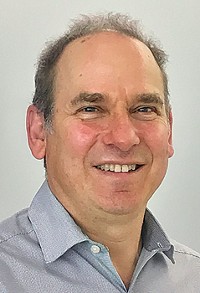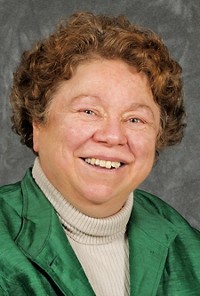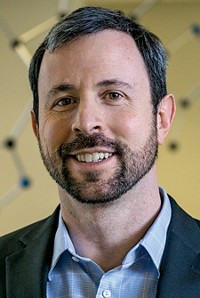Advertisement
Grab your lab coat. Let's get started
Welcome!
Welcome!
Create an account below to get 6 C&EN articles per month, receive newsletters and more - all free.
It seems this is your first time logging in online. Please enter the following information to continue.
As an ACS member you automatically get access to this site. All we need is few more details to create your reading experience.
Not you? Sign in with a different account.
Not you? Sign in with a different account.
ERROR 1
ERROR 1
ERROR 2
ERROR 2
ERROR 2
ERROR 2
ERROR 2
Password and Confirm password must match.
If you have an ACS member number, please enter it here so we can link this account to your membership. (optional)
ERROR 2
ACS values your privacy. By submitting your information, you are gaining access to C&EN and subscribing to our weekly newsletter. We use the information you provide to make your reading experience better, and we will never sell your data to third party members.
Obituaries
Peter A. Beak
Chemist is remembered for his contributions to physical organic chemistry, as well as his dedication to teaching and mentorship
by Linda Wang
March 3, 2021

A leader in physical organic and synthetic organic chemistry, Peter A. Beak died on February 21 at the age of 85 in Urbana, Illinois. He was the James R. Eiszner Endowed Chair in Chemistry at the University of Illinois Urbana-Champaign (UIUC), where he has served on the faculty for nearly 60 years.
“Peter brilliantly applied the principles of physical organic to advance our understanding of the structure and reactivity of organic compounds. In the process he developed a number of important concepts that have found wide usage, including complex-induced proximity effects, the endo-cyclic restriction test, and dipole-stabilized carbanions to name just a few,” says Steven C. Zimmerman, Roger Adams Professor of Chemistry at UIUC. “But what was extraordinary about Peter is how unassuming he was, always wanting to highlight the accomplishments of others, especially students. His humanity was so genuine. It just didn’t matter whether you were an incoming freshman or the University President, Peter would treat you with the same level of respect and dignity. He was uniformly loved.”
Beak earned a BA from Harvard University in 1957 and a PhD from Iowa State University in 1961.
“His impact on chemistry was enormous,” says Eric N. Jacobsen, Sheldon Emery Professor of Chemistry at Harvard University. “I think he is partly responsible for the renaissance in the field of physical organic chemistry we are witnessing today. Rather than analyze simple problems in extreme detail (which was the direction much of the field had taken in the 1960s and 70s), Peter’s program focused on complex problems where deep mechanistic insight could be connected to questions of genuine relevance to synthesis,” “His work on carbanions and especially on stereoselective lithiation chemistry is especially noteworthy in that regard, but I see each of his papers as a masterpiece in connecting a fundamental mechanistic question to a valuable reactivity concept.”
“Peter’s early contributions to enantioselective synthesis by the development and mechanistic study of enantioselective lithiations were seminal,” says Larry E. Overman, distinguished professor of Chemistry at the University of California, Irvine. “Even more significant was his influence as a teacher and mentor at the University of Illinois and on many organic chemists worldwide.”
“I was fortunate to have an advanced undergraduate organic chemistry course from Peter (ca. 1983). He emphasized a conceptual way of thinking about organic chemistry that ingrained in me the habit of ‘reason-by-analogy,’ ” says Jeffrey S. Moore, Stanley O. Ikenberry Endowed Chair and professor of chemistry at UIUC. “He taught me to stay true to the mission of teaching and training students as our primary purpose. He instilled in me that our role as faculty is to put the well-being of students first and foremost.”
“With characteristic modesty, Peter would always identify his most important contributions as the accomplishments of his current and former students,” says Catherine J. Murphy, Larry R. Faulkner Endowed Chair in Chemistry and head of the chemistry department at UIUC. “His was a difficult-to-emulate example, but one that all who knew him aspired to.”





Join the conversation
Contact the reporter
Submit a Letter to the Editor for publication
Engage with us on Twitter